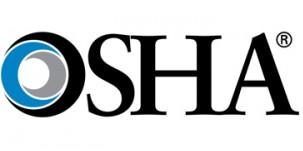OSHA has a lot of proposed new regs in the pipeline, from silica exposure limits to injury and illness prevention programs. Now we have an idea of the order in which they will receive action.
OSHA has released its Spring 2013 Regulatory Agenda. Yep, it came out in July, more than two weeks after spring ended, but that’s been the pattern. The Fall 2012 agenda came out a few days into winter.
Running a little later than expected also seems to be the theme when you compare the two lists. Many items are the same. Some deadlines stated in the Fall 2012 list have since passed. Most items have been pushed back a few months.
Nevertheless, whether the predicted target dates for action stick or not, it’s instructional to check out the agenda. Noting how the proposed regulatory changes are categorized and the order in which they are supposed to be enacted provides a realistic look into OSHA’s priorities, even if the time schedule is little more than wishful thinking.
Those on the “final rule” list are closest to becoming new rules. There are nine items on that list. Four of them involve procedures for the handling of retaliation complaints. The other five are:
- Occupational Injury and Illness Recording and Reporting Requirements; NAICS Update and Reporting Revisions (July 2013): This regulatory revision has two parts: 1) Use NAICS instead of SIC system to categorize industries that are partially exempt from maintaining occupational injury and illness records, and 2) Require employers to report to OSHA, within eight hours, all work-related fatalities and all work-related in-patient hospitalizations; and within 24 hours, all work-related amputations. The current regulation requires an employer to report to OSHA, within eight hours, all work-related fatalities and in-patient hospitalizations of three or more employees.
- Electric Power Transmission and Distribution; Electrical Protective Equipment (proposed final rule date July 2013): The construction industry standard addressing the safety of workers during the construction of electric power transmission and distribution lines is nearly 40 years old. OSHA has developed a revision of this standard.
- Walking Working Surfaces and Personal Fall Protection Systems — Slips, Trips and Fall Prevention (November 2013): New technologies and procedures have become available to protect employees from these hazards. OSHA has been working to update these rules to reflect current technology.
- Confined Spaces in Construction (December 2013): In 1993, OSHA issued a rule to protect employees in general industry who enter confined spaces. This would extend the rule to the construction industry.
- Vertical Tandem Lifts (April 2014): In 2011, a U.S. Court of Appeals remanded two provisions of the VTL final rule: the inspection requirement with respect to ship-to-shore VTLs and the total ban on platform container VTLs. OSHA is reopening the record to assess the technological feasibility of those two provisions.
- Consensus Standard Update — Signage (comment period ends July 15, 2013, with final rule expected to take effect on Sept. 11, 2013): OSHA would update references to consensus standards involving certain types of safety signage but would grandfather signs conforming to the current standard.
- Silica (NPRM July 2013): OSHA proposes to update the permissible exposure limit for silica for general industry. In the Fall 2012 Regulatory Agenda, OSHA expected to release the NPRM in May 2013.
- Improve Tracking of Injuries and Illnesses (NPRM July 2013): OSHA is proposing changes to its reporting system for occupational injuries and illnesses. A modernized electronic reporting system would be put in place.
- Beryllium (NPRM October 2013): Similar to the silica proposal, this would update the PEL for beryllium.
- Injury and Illness Prevention Program (NPRM January 2014): OSHA is developing a rule requiring employers to implement an I2P2 for their workplaces. These would be similar to safety management systems some companies already have in place.
- Combustible Dust (small business review scheduled to start in November 2013): The U.S. Chemical Safety Board (CSB) completed a study of combustible dust hazards in late 2006, which identified 281 combustible dust incidents between 1980 and 2005 that killed 119 workers and injured another 718. Although OSHA can cite companies for combustible dust hazards, the agency doesn’t have a specific regulation addressing them.
- Review/Lookback of OSHA Chemical Standards (request for information scheduled for August 2013): The majority of OSHA’s Permissible Exposure Limits (PELs) were adopted in 1971, and only a few have been updated since then.

No comments:
Post a Comment